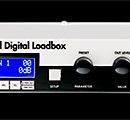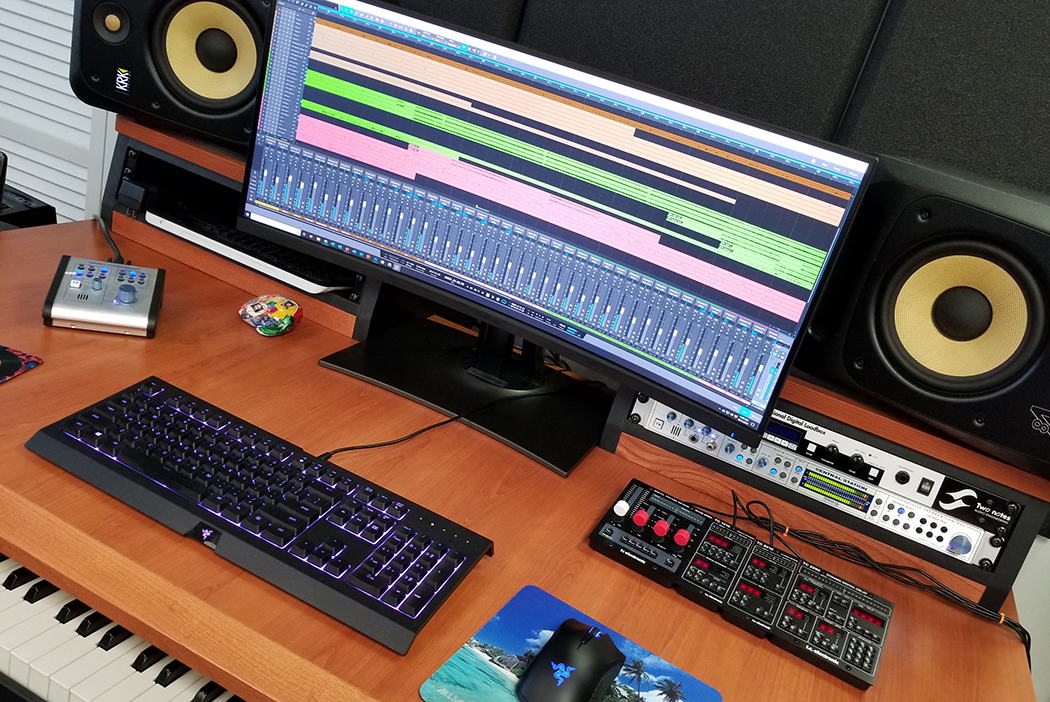 As fellow guitar players and gear maniacs, we are always looking for funky new stomp effects to add to our ever-growing pedalboards. The variety of modulation effects are as vast as the days are long, and it’s not uncommon to find chorus pedal lovers in possession of numerous varieties because many sound just different enough from each other to warrant another purchase.
As fellow guitar players and gear maniacs, we are always looking for funky new stomp effects to add to our ever-growing pedalboards. The variety of modulation effects are as vast as the days are long, and it’s not uncommon to find chorus pedal lovers in possession of numerous varieties because many sound just different enough from each other to warrant another purchase.
Chorused guitar tones are tricky sometimes because it’s not like a distortion or overdrive box that is so obvious in your tone. When we think of a chorus pedal, we think of pristine, sparkling clean sounds with a touch of airiness or sparkle, and alternately we think of chorused, distorted tones for that classic ‘80s hard rock rhythm sound, and big leads.
| Category | Value | Rating |
| Features | 20% | |
| Usability | 25% | |
| Sound | 25% | |
| Documentation & Support | 10% | |
| Price | 20% | |
| OVERALL RATING =3.6, which earns it a WIHO Award! 3.6 stars or better: Outstanding, WIHO Award 3 stars or better: Worth considering 2 stars or better: Suited to specific needs 1 star or less: Not recommended |
||
The Neunaber Technology Chroma Stereo Chorus delivers studio-grade modulation sound in a familiar pedal format. And while the price will certainly keep it off the working man’s pedalboard, the tone connoisseur and players with big stereo rigs may find this to be a fantastic addition to their sound. As such, the reaction we found among our team was varied: the bread-and-butter rig guys couldn’t justify the price, but everyone liked or loved the sound.
Features
The Chroma Chorus is a digital chorus pedal. It is a true stereo effects pedal, meaning there are two 1/4” inputs as well as a pair of 1/4” outputs. There are three knobs on the face of the pedal marked MIX, WIDTH, and multi functioned knob indicated by a triangle which can be assigned via downloadable software. It comes set by default as a REGENERATION knob.
Out of the box, the Chroma Stereo Chorus is a dual pitch transposition effect with regeneration, which increases the number of pitch-shifted voices as the control is increased. When set fully counter-clockwise, there is no regeneration effect.
The Chroma Chorus is powered with a center negative power adapter, which is not included. There is no battery option, so this pedal is strictly for the board-with-a-power-supply crowd. It is a high-impedance pedal with a buffered bypass, and a bright indicator light is easily visible.
There are two 3.5mm expression pedal inputs, which can be used to control the mix and width controls of the pedal (Neunaber sells a ¼” inch to 3.5 mm adapter on their website if you need one).
Also included is a USB cable for pedal customization. When it’s time to add that secret sauce where people don’t understand why their pedal sounds different than yours, all of the Neunaber pedals have a variety of settings that can be changed using a Mac or Windows-based application, downloadable from the company’s website. In the case of the Chroma Stereo Chorus, there are two mods available at present:
The first mod removes the regeneration control and replaces it with a tone control. It’s flat at 12:00, and it rolls off low frequencies when turned counter-clockwise (useful for bass chorus). Turning the control clockwise from 12:00 rolls off high frequencies.
The second modulation mod turns the pedal into a traditional dual chorus modulation effect. The knobs control chorus level, modulation rate, and modulation depth.
Usability
This pedal is targeted at guitar players with somewhat elaborate modulation pedal requirements, but there’s no need to be frightened by it. We plugged a BOSS PS-A power adapter in for testing and were up and running in one minute for our simplest test, while our more extensive testing involved connecting it to a Voodoo Lab Pedal Power 2 Plus power supply in a couple of “big rigs.”
In either case, once you plug it in, basic operation is as simple as any typical chorus pedal. Just a few knobs to get your sound dialed in; then play. But the real power behind this pedal lies under the hood when you tweak the settings, or when you connect it to stereo rigs.
 We installed the free NT Pedal Customizer application on our Macintosh in a matter of minutes. From the simple interface, we selected our Chroma Stereo Chorus pedal and had a choice of two pedal modifications that were installable with a single button press.
We installed the free NT Pedal Customizer application on our Macintosh in a matter of minutes. From the simple interface, we selected our Chroma Stereo Chorus pedal and had a choice of two pedal modifications that were installable with a single button press.
Sound
We started with the pedal at factory settings with all three knobs at 12:00. Modulation effects are subjective as to where in the signal chain they “belong.” Different positions in the signal chain, for example before or after a distortion pedal, or before or after the amp’s input, yield vastly different tones. We first tested the Neunaber Chroma Chorus with our three-channel Mesa/Boogie Triple Rectifier amp set to clean, a little gainy, and over the top, face melting, overdrive.
We started by using the Chroma Chorus as the first pedal in the signal chain before the amp’s input on the clean channel. This position yielded the best results for clean tones overall, and the Chroma Chorus exceeded our expectations of tone quality, partially due to the micro transposing of the signal.
Traditional choruses have an audible sweeping effect, and that audible sweep can be quite pronounced, and at times, abrasive sounding. We found Neunaber’s micro pitch shift delivered a superior, more organic sound and less obvious change from the original tone of the guitar. It was more akin to the sound of a doubling effect set to maximum pitch shift. The sound did have a pulse to it, but the pulse was not the typical swoosh of an overly effected chorus sound. It was very natural throughout all of the pedal’s knob settings in this position on this clean channel. The mix control, when pushed, only highlighted what we liked about the pedal—even maxed out at one hundred percent it never sounded bad!
We felt the same way about the regeneration knob. The more regeneration we dialed in, the more the shimmering, crystalline chorus effect was apparent in the sound, and it never became too overbearing as to be unusable. The width knob enhanced the warbling effect, and at every position sounded pleasing. For your clean chorus effects, there’s no rough spot to be found, and you don’t have to read further to know that this is a great sounding pedal for your needs.
Through channels two and three of the Mesa amp, though, we sometimes experienced more limited versatility. Only on the most conservative settings with the mix and regeneration near zero were we able to get any tone-snobby, useful tones as soon as our amp-generated distortion was introduced. The effect was a bit too overbearing and almost always sounded poorly matched with the original signal. To our ears it was as if the pedal was fighting the amp for sonic space. However, this problem was eliminated after loading the custom mod that removed the regeneration control and replaced it with a tone control. Dialing in a slight high-frequency boost was just the ticket for our classic hard rock tones. Of course, this forces a trade-off: optimizing the sound for your high-gain, hair band worship, or optimizing to satisfy your inner Andy Summers and Jamie West Oram.
Things got even better for us, though, once we placed the Chroma Stereo Chorus pedal in our amp’s effects loop (post-input stage), where it delivered studio-class modulation in spades—even with the default programming loaded. So long as the mix and regeneration knobs were kept at reasonable settings, the distorted chorus sound was very pleasing to our ears. The mix and regeneration knobs were dialed between twenty and seventy percent. At those settings, the pedal performed and sounded fantastic. However, we could not fully reproduce that gorgeous, pre-input stage, clean tone quite the same with the pedal in the effects loop. So for your live rig, if you live and die by modulation effects, you just may need to purchase a pair of these babies.
Next, we added a Marshall silver jubilee rig alongside our Mesa rig in order to hear how the stereo effect sounded. We connected our guitar to the mono input on the pedal and fed the left output to the Mesa and the right output to the Marshall. To say the sound was “other worldly” wouldn’t describe it well enough. This chorus pedal truly shines in stereo! The sound was wide, vibrant and three-dimensional. If you do a lot of work in the studio, we can easily hear this being your go-to pedal for clean, stereo guitar tones. It definitely achieves that died-and-went-to-heaven vibe.
Documentation and Product Support
The pedal is well documented online at Neunaber’s website. Brian Neunaber provides a thorough manual for all of his pedals as well as a great education on impedance, true bypass, and other topics beyond the scope of this review.
Price
The Neunaber Chroma Chorus sells for $229.00. For the pro rig or studio use, it’s easily worth the price of admission. But although this pedal can fit many applications and sounds great, there are other excellent sounding pedals for less money (albeit without the advanced configuration options and stereo use).
Contact Information
Neunaber Technology
www.neunaber.net
| Evaluation Short-List |
|














